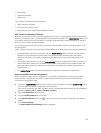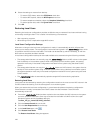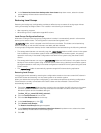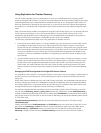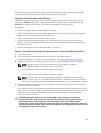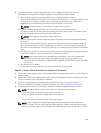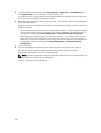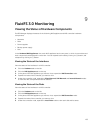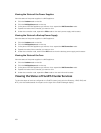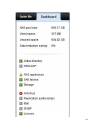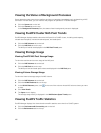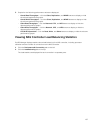
9. Start using cluster A to serve client requests.
Administrators must perform the following steps to set up DNS and authentication:
a) Point the DNS names from customer DNS server to cluster A instead of cluster B.
Ensure that the DNS server on cluster A is the same as the DNS server or in the same DNS farm as
the DNS server of cluster B. Existing client connections may break and need to re-establish during
this process.
NOTE: Complete steps b, c, and d only for single volume failovers.
b) On DNS, manually update the DNS entry for the NAS volume that was failed over.
This step repoints end users that are accessing this volume from cluster B to cluster A, while the
end users keep accessing it using the same DNS name.
NOTE: Client systems may need to refresh DNS cache.
c) To force CIFS and NFS clients to cluster A, we also must delete the CIFS shares and NFS exports
on cluster B.
This forces the CIFS and NFS clients to reconnect, at such time they are connected to cluster A.
After restoring the source volume’s configuration on cluster A, all of the shares and exports will
be present on the destination volume (on cluster A), so no share/export configuration information
is lost.
d) The failed over volume now can be accessed using the exact same DNS name and share name as
it was when hosted on cluster B, except now it is hosted on cluster A.
NOTE: NFS mounts must be un-mounted and mounted again. Active CIFS transfers fail
during this process, but if CIFS shares are mapped as local drives, they automatically
reconnect once the replication is deleted, DNS is updated, and NFS/CIFS shares are deleted
on cluster B.
e) Join AD server or LDAP/NIS.
Ensure that the AD and LDAP are in the same AD/LDAP farm or same server.
10. Build up replication structure between source cluster A and backup cluster B, to set up replication
policy between cluster A and cluster B, use cluster B volumes as replication target volumes, to
prepare for next disaster recover.
151



